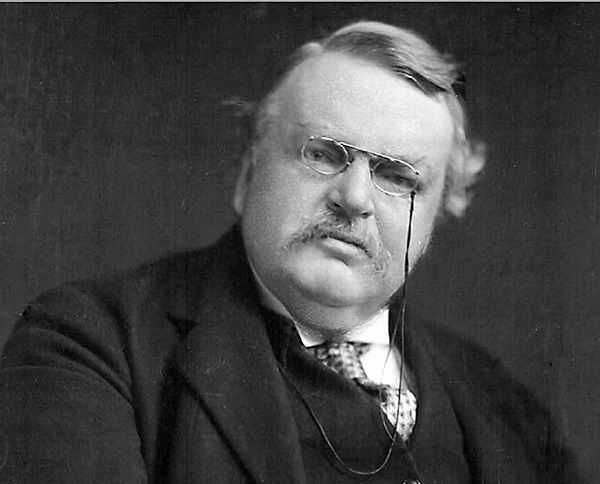A Piece of Chalk by GK Chesterton
‘A piece of Chalk’ is an anecdotic essay in which Chesterton describes how he spent a day sketching on a brown paper sitting on a hill. He becomes desperate not finding a white piece of chalk but the last sentence of the essay brings him wisdom that the entire hill is made up of chalk.
Summary
It is a nice cheerful morning. Mr. Chesterton is on a summer holiday. He wants to draw something. So, he picks up six bright-coloured chalks, keeps them in his pocket and sets out. On the way through a village in Sussex, he realizes that he has not brought any paper with him. There is a house nearby. He goes inside, and finds an elderly woman busy in her kitchen. She appears an ordinary person busy in her mundane duties. He asks her if she has brown paper. Assuming that the visitor wants the paper for packaging some items, she gives a nice lecture about the tenacity and strength of the paper she is offering. The author politely says that he wants to draw something on it.
The author keeps on explaining why he needs the paper. He says that the paper should be something like October woods or beer, or the way the Earth was first made. All these thoughts are not properly recorded in the woman's mind. She is a very worldly and ordinary person to understand the author. She just gives the paper and the writer keeps it in his pocket. He recalls how he has planned to compose a poem about the possessions in his pocket. But he gives up the idea of writing a poem as it will be too long for modern day readers.
The author starts to walk with the piece of paper and chalk in his pocket. He walks on for a long distance. Then, he looks around for a place to sit and draw. He never knows the urge to draw Nature would come to him. Instead, he toys with the idea of drawing some random things like devils, ghosts, saints in their robes, or some such mythical characters. He is thinking of things he can draw. He finally draws a cow with seven horns. He wants to draw the landscape, but the crayon he carries with him is not ideal to draw one. He thinks the old poets who lived before Wordsworth were supposed not to care very much about nature as they didn’t describe it much.
When the author begins to draw, he discovers that he has left the white piece of chalk behind at home. The white-colored piece of chalk is crucial for drawing. For painters and painting lovers, white is the color to express a positive feeling, especially if the drawing is to be made on brown papers. White color may be nothing to do with the lay man, but it registers itself so conspicuously on brown paper. Using the white color on brown background has a powerful visual effect. In religious practices, white symbolizes purity. White implies purity and good moral conduct.
The author sits on the hill in despair. He hasn’t got the piece of white chalk. It is a remote place with virtually no human habitation nearby. So, the possibility of buying or borrowing a piece of white chalk is not there. He feels restless thinking that the picture he has drawn will be incomplete.
The author discovers the landscape is made out of white chalk. He picks up a chunk of the white chalk piece from the ground, and continues his drawing. His ideas and thoughts have found expression on the brown paper. He admiringly looks round and admires Southern England is such a rich place and is a piece of chalk.



0 Comments
Please, do not enter any spam link in the comment box.